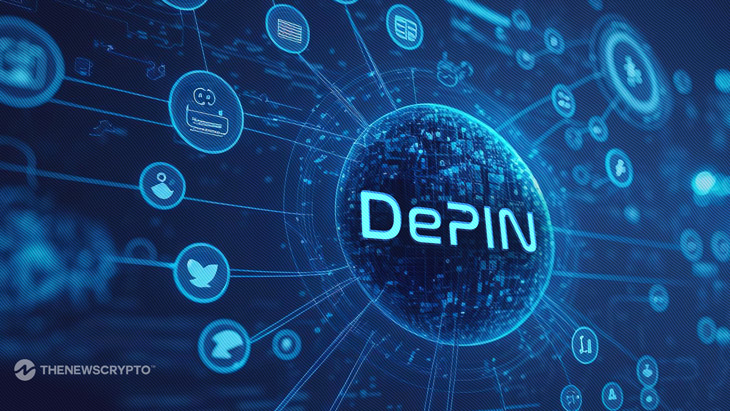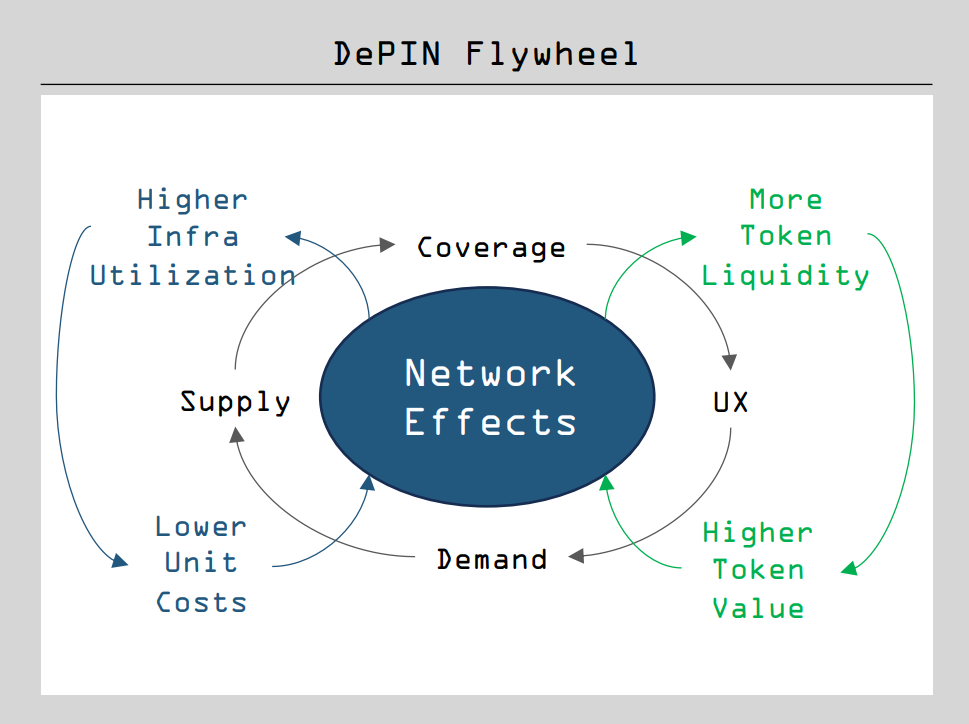Decentralized Physical Infrastructure Networks (DePIN): Revolutionizing Infrastructure with Blockchain

Introduction
In an era where digital transformation is reshaping industries, Decentralized Physical Infrastructure Networks (DePIN) are emerging as a groundbreaking approach to managing physical and digital infrastructure. By leveraging blockchain technology, token incentives, and peer-to-peer (P2P) networks, DePINs decentralize the ownership, control, and operation of critical systems like telecommunications, energy grids, data storage, and mobility networks. Unlike traditional centralized models dominated by corporations or governments, DePINs empower communities and individuals to contribute resources and share in the rewards, fostering transparency, resilience, and innovation. This article explores the architecture, benefits, applications, challenges, and future potential of DePINs, supported by real-world examples and references.
What is DePIN?
DePIN, or Decentralized Physical Infrastructure Networks, refers to blockchain-based systems that coordinate and manage physical and digital infrastructure through decentralized mechanisms. These networks incentivize participants to contribute resources—such as hardware, bandwidth, storage, or energy—by rewarding them with cryptocurrency tokens. DePINs operate on the principle of decentralization, eliminating single points of failure and reducing reliance on centralized authorities. They bridge the physical and digital worlds, applying Web3 principles to tangible assets like routers, solar panels, and IoT devices.
DePINs can be categorized into two types:
- Physical Resource Networks (PRNs): These manage physical assets like wireless hotspots (e.g., Helium) or energy grids (e.g., Arkreen). Participants contribute hardware to the network.
- Digital Resource Networks (DRNs): These handle digital resources like storage (e.g., Filecoin) or computing power (e.g., Render Network). Participants share digital assets without requiring physical proximity.
The DePIN ecosystem is gaining traction, with a market capitalization exceeding $32 billion as of 2024, surpassing that of Decentralized Exchange (DEX) tokens.

How DePIN Works
DePINs integrate several technologies to create a decentralized infrastructure ecosystem:
- Blockchain Technology: The backbone of DePINs, blockchain provides a transparent, immutable ledger for recording transactions, resource contributions, and rewards. Smart contracts automate processes like resource allocation and payments, reducing the need for intermediaries.
- Tokenization: Physical or digital resources are represented as tokens, enabling seamless trading and incentivization. Contributors earn tokens based on their resource contributions, creating an economic model that encourages participation.
- Peer-to-Peer Networks: DePINs rely on P2P protocols, allowing devices like smartphones, routers, or IoT gadgets to communicate directly without centralized hubs. This enhances efficiency and scalability.
- IoT Integration: Internet of Things (IoT) devices collect real-time data from physical infrastructure, enabling dynamic coordination and monitoring. For example, IoT sensors in a decentralized energy grid can optimize energy distribution.
- Consensus Mechanisms: Protocols like Proof of Spacetime (Filecoin) or Proof of Coverage (Helium) ensure network security and verify contributions, maintaining trust in the system.
For instance, in the Filecoin network, users contribute unused storage space and earn FIL tokens. Data is encrypted, split, and distributed across multiple nodes, with blockchain handling rewards and off-chain networks managing data transfer.
Benefits of DePIN
DePINs offer several advantages over traditional centralized infrastructure models:
- Transparency and Trust: All transactions and contributions are recorded on a public blockchain, reducing fraud and increasing stakeholder trust. This transparency is particularly valuable in industries prone to opaque decision-making, such as energy or telecom.
- Resilience: Decentralized networks are inherently more robust, as they lack single points of failure. If one node fails, others can continue operations, ensuring service continuity during disruptions.
- Cost Efficiency: By crowdsourcing resources, DePINs reduce the need for large upfront investments by corporations. Smart contracts optimize resource allocation, minimizing waste and administrative overhead.
- Inclusivity and Democratization: DePINs enable individuals and small businesses to participate in infrastructure development, challenging industries historically dominated by large players. This fosters innovation and equitable access.
- Scalability: As more participants join, the network’s capacity grows organically, making DePINs ideal for rapidly expanding sectors like telecommunications or renewable energy.
- Sustainability: DePINs promote resource sharing (e.g., unused storage or energy), reducing waste and supporting sustainable practices. Projects like Arkreen integrate renewable energy sources into decentralized grids.
Real-World Applications and Projects
DePINs are transforming various industries through innovative projects. Below are some prominent examples:
1. Helium: Decentralized Wireless Connectivity
Helium is a leading DePIN project that creates a global network of wireless hotspots for IoT devices. Participants host “Helium Hotspots,” which act as mini cell towers, providing connectivity and earning HNT tokens. With nearly half a million hotspots worldwide, Helium offers cost-effective broadband access, particularly in underserved areas.
2. Filecoin: Decentralized Storage
Filecoin is the largest DePIN project by market capitalization, offering a decentralized alternative to centralized cloud storage providers like Amazon Web Services. Users rent out unused storage space and earn FIL tokens, while data is secured using Proof of Spacetime and Proof of Replication. Filecoin’s peer-to-peer model enhances security and reduces costs.
3. Render Network: Decentralized GPU Rendering
Render Network allows users to contribute idle GPU power for rendering tasks like 3D animations and visual effects. Contributors earn RNDR tokens, while users access affordable, high-performance computing. This democratizes access to computational resources, challenging traditional providers.
4. Hivemapper: Decentralized Mapping
Hivemapper is a Solana-based DePIN project that crowdsources global maps using dashcam footage from drivers. Contributors earn tokens for sharing geospatial data, offering a decentralized alternative to Google Maps with frequent updates and localized insights.
5. Arkreen: Decentralized Energy Grids
Arkreen leverages DePIN to create decentralized renewable energy networks. Participants contribute solar panels or other renewable energy sources, trading excess energy peer-to-peer via blockchain. This promotes sustainability and equitable energy access.
6. MapMetrics: Mobility DePIN
MapMetrics is a navigation app that rewards users for sharing driving data, creating a decentralized mobility network. Unlike traditional apps that monetize user data, MapMetrics ensures users retain control and earn tokens.
Challenges Facing DePIN
Despite their potential, DePINs face several hurdles:
- Regulatory Barriers: Operating in regulated sectors like telecommunications or energy requires navigating complex legal frameworks, which can hinder adoption.
- Scalability Issues: While DePINs are designed to scale, managing large networks of physical devices poses technical challenges, such as latency or coordination.
- Security Concerns: Although blockchain enhances security, physical devices and IoT integrations are vulnerable to cyberattacks. Robust protocols are needed to protect data and infrastructure.
- Incentive Dilution: Token-based reward systems can become dilutive if not carefully designed, reducing long-term viability.
- Competition with Web2 Giants: DePINs compete against established players like Amazon, Google, and Microsoft, which have significant resources and market dominance.
- User Adoption: Convincing individuals to invest in hardware (e.g., hotspots) or participate in DePINs requires education and trust, particularly for non-crypto-savvy users.
The Future of DePIN
DePINs are poised to play a pivotal role in the evolution of Web3 and the broader digital economy. According to Messari, the DePIN market could grow to $3.5 trillion by 2028, with potential to disrupt the $90 trillion non-digital economy. Venture capitalists are increasingly investing in DePIN protocols, with some dedicating entire funds to the sector.
Future developments may include:
- Integration with AI and Machine Learning: AI agents could enhance DePINs by optimizing resource allocation and predicting demand, creating more efficient networks.
- Expansion into New Sectors: DePINs could revolutionize healthcare (e.g., decentralized patient data management), logistics (e.g., supply chain transparency), and urban planning (e.g., smart cities).
- Interoperability Standards: Universal frameworks like IoTeX’s W3bstream could simplify DePIN development, enabling seamless integration across projects.
- Machine Economy: DePINs could enable autonomous machines to earn, spend, and build infrastructure without human intervention, creating a self-sustaining economy.
Conclusion
Decentralized Physical Infrastructure Networks (DePIN) represent a paradigm shift in how we build, manage, and interact with infrastructure. By leveraging blockchain, token incentives, and P2P networks, DePINs empower communities, enhance resilience, and promote sustainability. Projects like Helium, Filecoin, and Arkreen demonstrate the transformative potential of DePINs across telecommunications, storage, and energy sectors. However, challenges like regulation, scalability, and competition must be addressed to achieve mainstream adoption.
As DePINs continue to evolve, they hold the promise of democratizing infrastructure, bridging the gap between digital and physical worlds, and reshaping industries for a more equitable and efficient future. For those interested in exploring DePIN, participating in projects like Helium or Filecoin or staying informed through platforms like CoinMarketCap and Crypto Altruism is a great starting point.
About Mitosis:
Mitosis APP
Blog
Docs
X
Discord
Comments ()